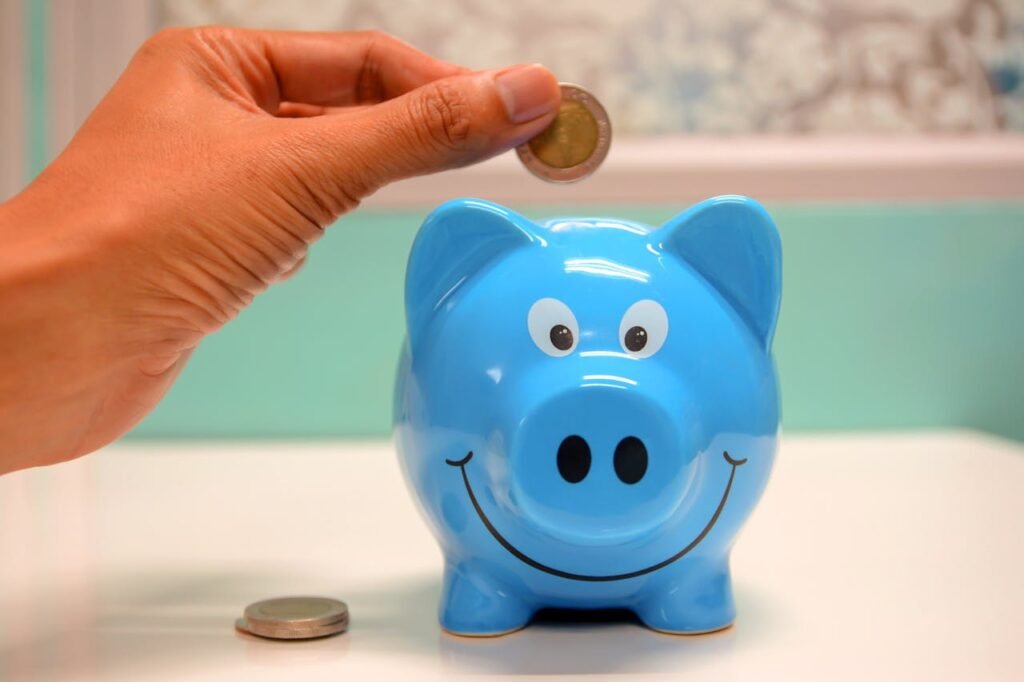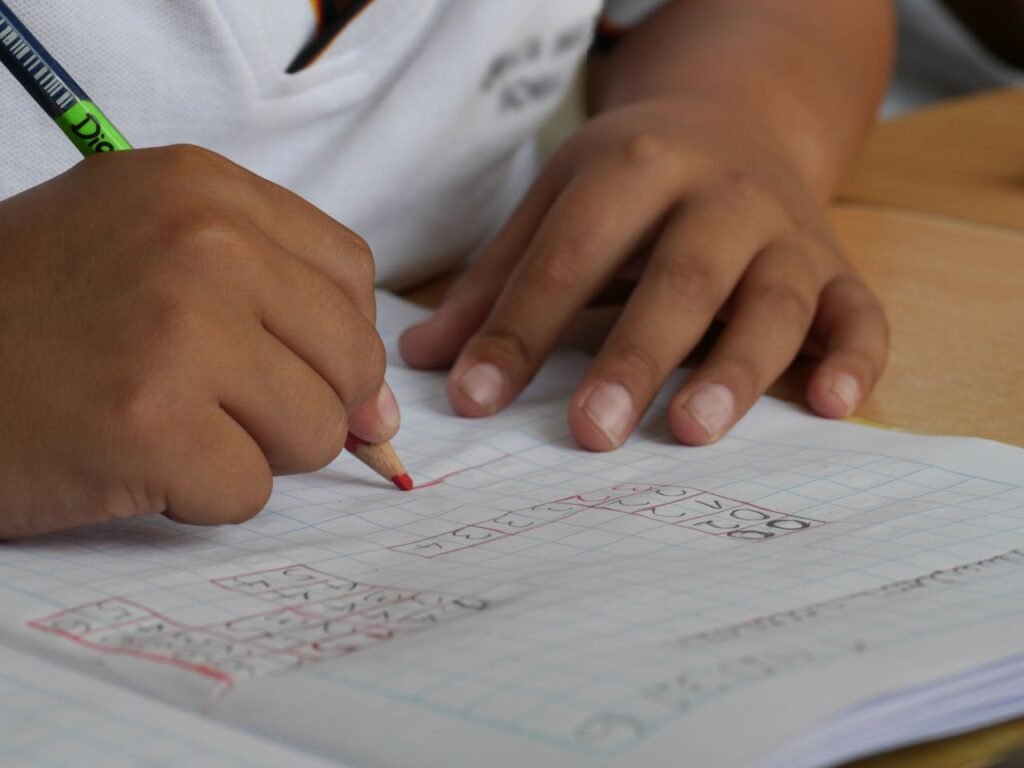Let’s talk about something simple but super important—money. We use it every day, often without even thinking. You need money to buy your favorite snack, to get a toy, or to go on a school trip. But where does money come from? And how do we make sure we don’t spend it all too fast? That’s where money math comes in—and yes, even little kids can learn it!
When kids learn how money works—how to count coins, save a little, spend wisely, and maybe even plan for something special—it gives them confidence. It helps them feel smart and in control. They begin to make better choices, not just with money, but in many parts of life. And the best part? Learning about money can be super fun when it’s done the right way.
At Debsie, we believe that teaching kids about money doesn’t have to be boring or hard. In this guide, we’ll walk through everything step by step—like counting coins, spotting different notes, setting small goals, and even building a simple budget. Whether your child is 5 or 15, these tips will help build smart habits that last a lifetime.
Step 1: Get to Know Your Coins and Notes
Before we can count money, we need to know what it looks like. Let’s start with coins. Most countries have coins in different sizes and values. For example, some are worth 1 unit (like $0.01 or ₹1), some are worth 5, 10, 25, or even 50. They usually come in silver or copper colors and have different shapes or numbers printed on them.
You can make learning this part fun. Take a few real coins, lay them out on the table, and let your child touch and look at them. Say the name and value of each one out loud: “This is a 10-cent coin,” or “This is a 2-rupee coin.” Kids remember better when they see and say things at the same time. You can also let them sort the coins by size or color. It’s like a mini treasure hunt!
Now let’s talk about paper notes. These come in bigger values—like 10, 20, 50, 100, or more. Each one looks different. You can help your child by showing them how to read the number printed on each note. Ask questions like: “Which one is more—this 20 or this 50?” You can even make it a game: mix up a few notes and ask them to arrange them from smallest to biggest.
Step 2: Counting Money the Easy Way

Once your child knows the coins and notes, it’s time to practice counting. This can be tricky at first, so go slowly. Start with a few coins of the same kind. For example, give them five 1-dollar coins and count them together: “1, 2, 3, 4, 5.” That’s five dollars.
Now try mixing it up a little. Give a 1-dollar coin, a 2-dollar coin, and a 5-dollar coin. Help your child add them: “1 + 2 + 5 = 8.” Show them how to count on their fingers or use a small notebook to write it down. Visual tools help a lot at this age.
You can also play pretend games like “grocery shopping” at home. Put price tags on toys or books, then give your child some play coins or real change. Ask them to “buy” something and hand you the right amount. This teaches them not just counting, but also decision-making—they have to choose what they can afford with what they have.
And remember, you don’t have to do it all in one day. Just 10 minutes a day is enough. Make it part of daily life. Count coins in their piggy bank. Let them help you count change at the store. Kids learn best when they feel involved.
Step 3: Learning to Make Smart Choices
Now that kids know how to count money, it’s time for something even more exciting—making choices with it. This is where budgeting starts.
Let’s say your child has 10 coins. They can buy a toy for 6 coins, a snack for 3 coins, or a book for 8 coins. But here’s the catch—they can’t buy everything. So they need to decide. Do they want the toy and the snack? Or just the book? This simple game teaches them something very important: you can’t buy everything, and that’s okay.
You can make this real by giving them a small amount of money to spend each week. Maybe 5 or 10 units. Let them choose how to use it. Maybe they’ll save it for a bigger thing next week. Maybe they’ll spend it all. That’s part of the learning. Let them feel proud when they save, and even let them feel a little regret if they spend too fast. These little lessons are powerful.
Also, talk to your kids about needs vs. wants. A need is something important—like food, school supplies, or warm clothes. A want is something fun—like toys or candy. When they learn the difference, they become better at making smart choices.
Step 4: Saving for Something Big
Kids love toys, books, games, and treats. But they also love setting goals—especially when there’s a reward at the end. This is where saving money becomes fun.
Start with something simple. Maybe your child wants a toy that costs 50 units. If they save 10 units every week, ask them how many weeks it will take. Let them do the math: “10, 20, 30, 40, 50—five weeks!” You can make a chart together. Every time they save, they get to color in a box or add a sticker. It’s like a little adventure, and they’re the hero of the story.
To make saving easier, give them a small jar, a box, or even a clear piggy bank. Being able to see the money grow makes saving exciting. You can also create mini rewards. Like, “If you save three weeks in a row, we’ll go for a fun walk or play your favorite game together.”
Also, try using stories. Tell them about something you saved for when you were younger. Let them see that grown-ups also have to wait and plan. It helps them feel more connected to the idea and shows that saving is not just for kids—it’s a smart habit for life.
Step 5: Try Making a Simple Budget Together
Now that your child can count money and understands saving, it’s time to introduce the word “budget.” Don’t worry—it’s not a scary word. A budget just means planning where your money will go before you spend it. That’s all.
To make it super easy, try this fun way: use three jars or envelopes and label them:
- Spend – for small things they want now
- Save – for something special later
- Share – for helping others or gifts
Let’s say your child gets 10 units a week. They could choose to put 5 units in “Spend,” 3 in “Save,” and 2 in “Share.” You don’t have to be strict—let them decide how to divide it. The goal is to help them think about money in different ways.
This little budget helps them build three important skills:
- Control – not spending everything at once
- Patience – waiting and planning for bigger goals
- Kindness – thinking of others too
You can also keep a simple notebook. Each time they add or spend, write it down together. Ask them questions like: “How much do you have left?” or “How long until you reach your goal?” This way, they see the math in real life. It’s not just numbers in a book anymore.
Step 6: Use Real-Life Situations to Practice
One of the best ways for kids to get better at money math is by using it in everyday life. Don’t wait for a special “lesson.” Turn real moments into learning chances.
At the store, give your child a small job. Say, “We have 100 units to buy fruit. Can you help me choose?” Let them look at prices and add things up. They’ll start to notice which things cost more, and which are a better deal.
If you’re ordering food online, show them the receipt. Ask them to spot the total, the tax, or the delivery fee. These are simple things, but they teach kids how money works in the real world.
Even during birthday parties or festivals, talk about costs. “We’re spending 200 units on gifts this year. What can we get for that?” Let them make choices and see how planning helps you stay on track.
And if they make mistakes—it’s okay. That’s how learning happens. The important thing is to talk about it. Ask, “What would you do differently next time?” You’re not just teaching math now. You’re teaching life skills—like thinking ahead, solving problems, and being responsible.
Step 7: Make Money Lessons Fun with Games
Learning about money doesn’t need to feel like school. In fact, the more fun it is, the faster kids learn. That’s why games are a great way to practice money math.
You can start with simple board games like Monopoly, The Game of Life, or even store role-play at home. These games help kids count money, give change, make choices, and think about value—all while playing. Even something like setting up a pretend lemonade stand at home can turn into a full math adventure.
You can also create your own games. For example:
- Price Tag Hunt: Hide toy items around the room with pretend price tags. Give your child “money” and ask them to shop with a budget.
- Coin Match-Up: Mix coins and have them match values. Like two 5s for a 10, or five 2s for a 10.
- Budget Challenge: Give your child a scenario: “You have 20 units and want to buy snacks, a toy, and a book. What will you pick?”
Don’t forget apps and online games too. At Debsie, we use gamified learning tools that help kids master real-life math while having fun. When learning feels like play, kids stay engaged and excited.
Step 8: Talk About Earning Money
So far, we’ve talked a lot about counting, saving, and spending. But where does money come from in the first place? It’s important for kids to also understand earning.
Now, you don’t need to turn your child into a worker! But you can help them understand the idea that money is usually earned by doing something useful or helpful. For example, grown-ups go to work to earn money. Kids can also earn small amounts by doing extra tasks at home.
Try setting up an “earn and learn” plan. Maybe they can earn 2 units for watering the plants, or 3 units for organizing their bookshelf. Make it clear it’s not for their regular chores—but for going a little extra.
This teaches them the value of effort and reward. When they work for something, they appreciate it more. And it makes saving feel even better because they know how hard they worked to earn it.
You can even talk about real-world jobs. Ask your child: “What do you think a doctor does to earn money?” or “How do you think shopkeepers earn money?” These conversations open their minds and build curiosity.
Learning how money is earned helps kids respect it more. It also builds confidence and independence—they begin to understand that they can do things, set goals, and reach them on their own.
Step 9: Build Good Habits Early
Learning about money isn’t just about math. It’s also about building good habits—little routines that shape how kids think and act every day.
One great habit is checking money regularly. Maybe once a week, sit with your child and look at their jar or notebook. How much do they have? What do they want to save for? This quick check-in helps them stay focused and aware.
Another good habit is thinking before spending. Teach your child to pause and ask: “Do I really need this right now? Or can I wait?” Even just a five-second pause helps build self-control.
Help them learn how to say no to impulse buys, and yes to smart choices. If they really want something, suggest they wait two days and then decide. If they still want it, they can plan to save. If not, they just saved their money! That’s a win.
Also, remind them that mistakes are part of learning. If they spend too fast or forget to save, don’t scold them. Just talk about what happened and what they could do next time. These small conversations help them grow not just as learners, but as smart young decision-makers.
Step 10: Keep the Learning Going as They Grow
Money lessons don’t stop when a child learns how to count coins. As they get older, you can slowly introduce new ideas—like bank accounts, interest, online payments, or even budgeting apps. But always go step by step.
For younger kids, focus on coins, counting, saving, and small goals. For pre-teens, add budgeting, earning, giving, and tracking expenses. For teens, talk about credit cards, digital wallets, and bigger financial goals.
No matter the age, keep the learning hands-on, simple, and real. Don’t just talk about it—let them try it. Show them how you plan your grocery budget, or how you save for family holidays. Learning from real life is the best kind of school.
And remember, you don’t have to do it alone. At Debsie, we offer fun, interactive lessons where kids learn money skills, math, and much more—from friendly teachers who care. Whether it’s through games, challenges, or real-life examples, we make sure every child learns in a way that fits them.
How Debsie Helps Kids Learn Money Math & Life Skills

At Debsie, we believe that kids should learn not just what to think, but how to think. That’s why our approach to teaching money math is hands-on, fun, and designed to help kids grow in every area of life—from school to real-world situations.
🎯 Learning That Feels Like a Game
At Debsie, every lesson is filled with playful activities, mini-games, and real-life challenges. When kids learn about coins, spending, or saving, it feels like an adventure. They might run a pretend shop, budget for a party, or earn “points” by completing savings goals.
Learning doesn’t feel like homework—it feels like play.
🧑🏫 Friendly Teachers Who Make Learning Fun
All our teachers are carefully selected for their patience, kindness, and real experience teaching kids of different ages. Whether your child is 5 or 15, they’ll learn money skills from someone who knows how to make things simple and interesting.
Lessons are taught live and in real time, so kids can ask questions, share ideas, and stay involved every step of the way.
💡 Practical Skills, Not Just Theory
Kids at Debsie don’t just memorize numbers. They learn how to use them in real life. They learn how to:
- Count real coins and notes
- Plan and manage simple budgets
- Understand spending and saving choices
- Set financial goals
- Think ahead and make smart decisions
These are skills they’ll use forever—not just on tests, but in daily life.
📈 Personalized Learning for Every Child
Every child is different. Some kids love numbers. Some find math tricky. That’s okay.
At Debsie, each learning path is personalized. We meet your child at their level and help them grow step by step. They can learn at their own pace—slow or fast—with all the support they need.
Whether your child is a complete beginner or ready for deeper thinking, Debsie helps them move forward with confidence.
🌍 A Global Learning Community
Debsie has students in over 9 countries and 4 continents. Your child becomes part of a global classroom—learning from others, sharing ideas, and growing up with a curious and open mind.
And don’t worry, it’s all 100% safe, secure, and child-friendly.
🤝 Parent Support and Progress Reports
We believe parents are part of the learning team. That’s why Debsie sends regular updates, skill reports, and easy ways to help your child at home.
You’ll always know what they’re learning, how they’re growing, and what to celebrate.
Final Thoughts: Start Small, Grow Big
Teaching kids about money doesn’t have to be complicated. In fact, the simpler, the better. Just by talking about coins, setting little goals, and playing fun money games at home, you’re giving your child something powerful—a way to think smart, solve problems, and make good choices.
Money math is not just about buying and saving. It’s about thinking clearly, planning ahead, and feeling proud of every little win. These are life skills that your child will carry forever, and the best part? They can start learning today, no matter how young they are.
At Debsie, we’re here to guide you and your child through this journey. Our expert teachers, fun lessons, and hands-on challenges make money math easy, exciting, and full of heart.
💬 Take the first step today—book a free trial class and see how we turn everyday math into a magical learning adventure.
Read Next:



